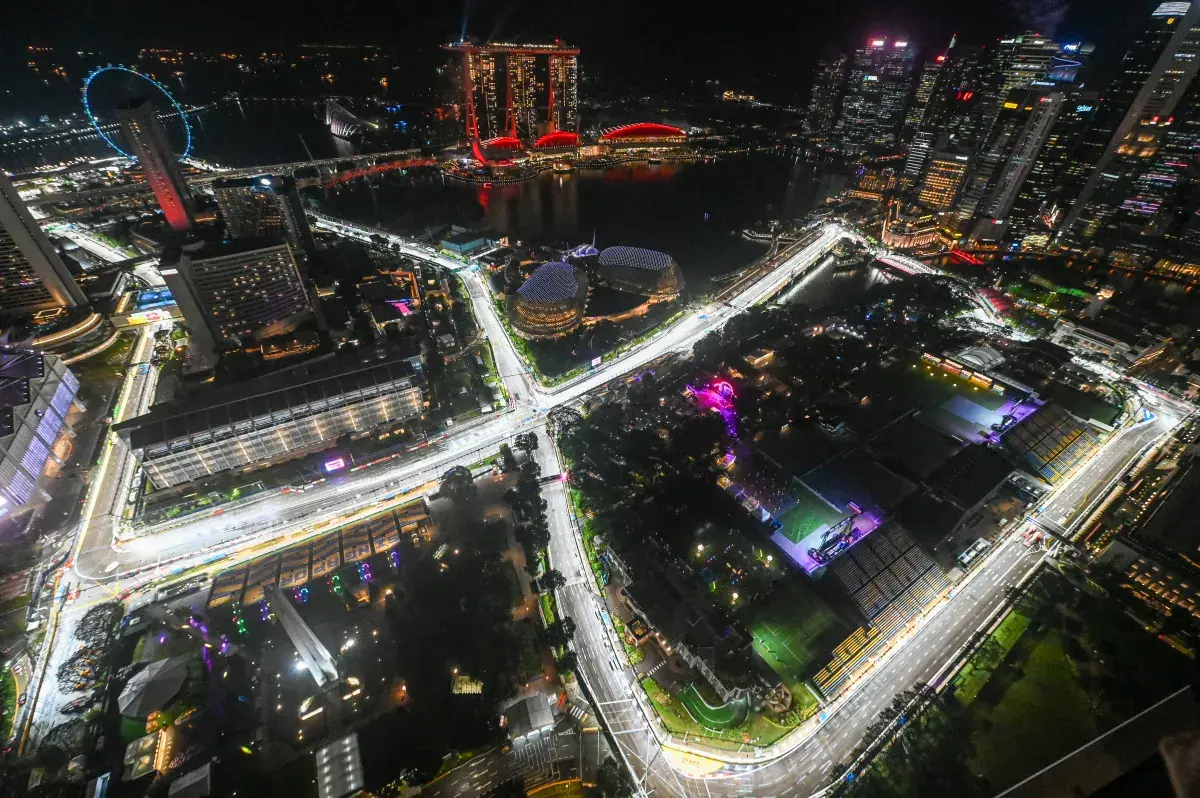
The Singapore Grand Prix has officially been designated a Heat Hazard event for 2025, triggering new FIA safety protocols designed to protect drivers from extreme conditions.
Why Singapore is Different
Already regarded as one of the toughest races on the calendar, Singapore’s night event combines a high downforce street circuit with high humidity and consistently high temperatures. Drivers face not only a physical fight, but also a heightened risk of heat-related illnesses during its two-hour duration – something we’ve seen too many times in the past.
FIA race director Rui Marques confirmed on Thursday that forecasts for both Saturday and Sunday predict highs of 31°C, the threshold set by the governing body for classifying a race as a Heat Hazard.
Cooling Vest Changes
This means teams and drivers must now work within FIA rules to mitigate this potential danger. They have two options: either their drivers wear FIA-approved cooling vests or they carry ballast to compensate for not using them.
The vests circulate coolant through tubes to lower body temperature but require cars to be fitted with specific hardware, including pumps, a coolant reservoir, and a heat exchanger. If a driver chooses not to wear the vest, an additional 0.5kg of ballast must be added to the cockpit to make up for the lack of hardware.
The system was introduced after the 2023 Qatar Grand Prix, when several drivers required medical attention after an intense and hot race.
Why the Rules Changed
Originally, cooling vests were set to be mandatory whenever the Heat Hazard levels were reached. But after pretty negative driver feedback and poor reliability, the FIA made the vests optional.
Some drivers, like Williams’s Carlos Sainz, aren’t so sure, especially after previous versions of the vests have malfunctioned, with them circulating warm or at least ambient water around the system.
George Russell became the first driver to race with the new vest at the 2025 Bahrain Grand Prix where high temperatures offered the perfect test case. Russell finished second.
“Of course there’s always room to improve,” he said afterwards. “But for us as a team, they’ve been putting in so much hard work and had the confidence that the system would work that I wanted to give it a whirl. So far, so good.”
Carlos Sainz on Humid Singapore Race
The driver seemed mildly uninterested in the cooling vest, with him turning his attention to the race at hand instead of a technology that may or may not work.
“I think there’s a combination of heat plus humidity. I think it can be 29 degrees but the humidity gets a real feel inside the car and out here to a much higher level of heat perception,” Sainz explained. “I think only hot is not too bad for us. We have that for example in Hungary where it gets really hot but it’s not humid.
“Humid on its own is not too bad at all if it’s not too hot but when it’s 28, 30 degrees plus humid that’s when it gets to Singapore levels and it’s tough.”
On the cooling vest itself, Sainz added: “I think teams are managing to make it work better and better every time we run it. At the beginning we had it to work more or less for half an hour. I think hopefully now the whole system can work at least for an hour. It’s a two-hour race. Again, I’ve done 10 times Singapore.
“If it breaks or it doesn’t work I’m not worried. I’ll do the race and I’ll jump out fresh like I always do. But if it works, better because then you suffer a bit less.”



